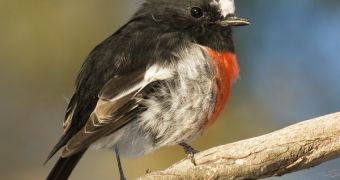Experts have been conducting studies into how birds and their ecosystems evolve for a very long time, and they have for many years relied on observations by citizens to help them expand their databases.
In the United States, collaborations between experts and bird watchers have been going on since at least the 1950, say experts at the Cornell University, in Ithaca, New York.
Citizens helping scientists is nothing new, as the habit has been around for years. Now, with the advent of the Internet, this is easier than ever.
Just consider initiatives such as those looking for alien life, or to classify galaxies, or to learn how proteins fold. All of them use computational power from the computers of willing participants.
But, as far as bird studies go, the collaboration spans back a longer period of time, to before the Internet was ever invented.
“It goes back to the 18th century, with people studying birds in Finland. It's a wonderful tradition in Europe, with a couple hundred years of data. It goes back pretty far in North America as well,” says Janis Dickinson.
The scientist is a lab ecologist and the director of citizen science at the Cornell University Lab of Ornithology. She adds that amateur data are used for example in tracking down the effects of disease among the general bird population.
Oddly, the fields of ornithology and astronomy have benefited the most from the inclusion of amateur scientists into the fold.
“So those are the two areas where citizen science has been enormously successful. [And that's] because there is this wonderful match between this data that we want to gather, and what these hobbyists like to do,” Dickinson says.
“There is also a lot of altruism involved. We hear from people that they enjoy helping science, that they are interested in conservation,” she adds.
The expert says that the data collected by amateurs is already used in a variety of studies, thanks to support and funding provided by the US National Science Foundation (NSF).
“We have historic temperature records, too, for historic patterns on climate, in all of these different regions. And so, we can look at what the relationships were in the past between local weather or climate trends, and the timing of when birds breed,” adds biologist Caren Cooper.

 14 DAY TRIAL //
14 DAY TRIAL //